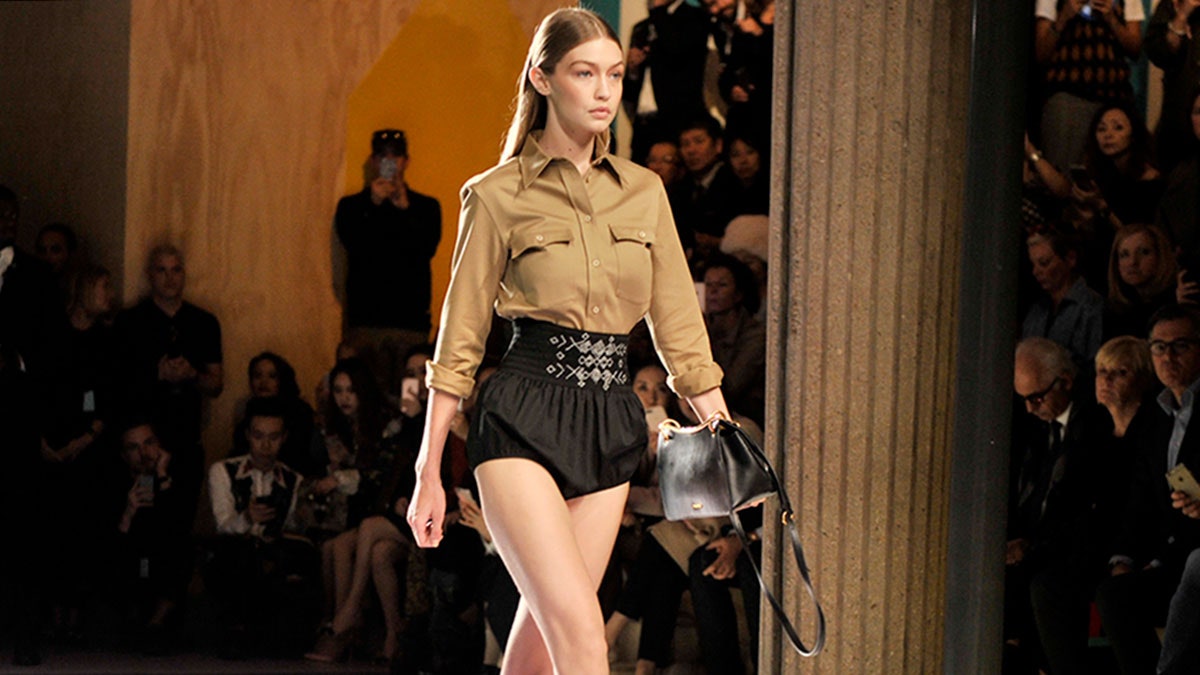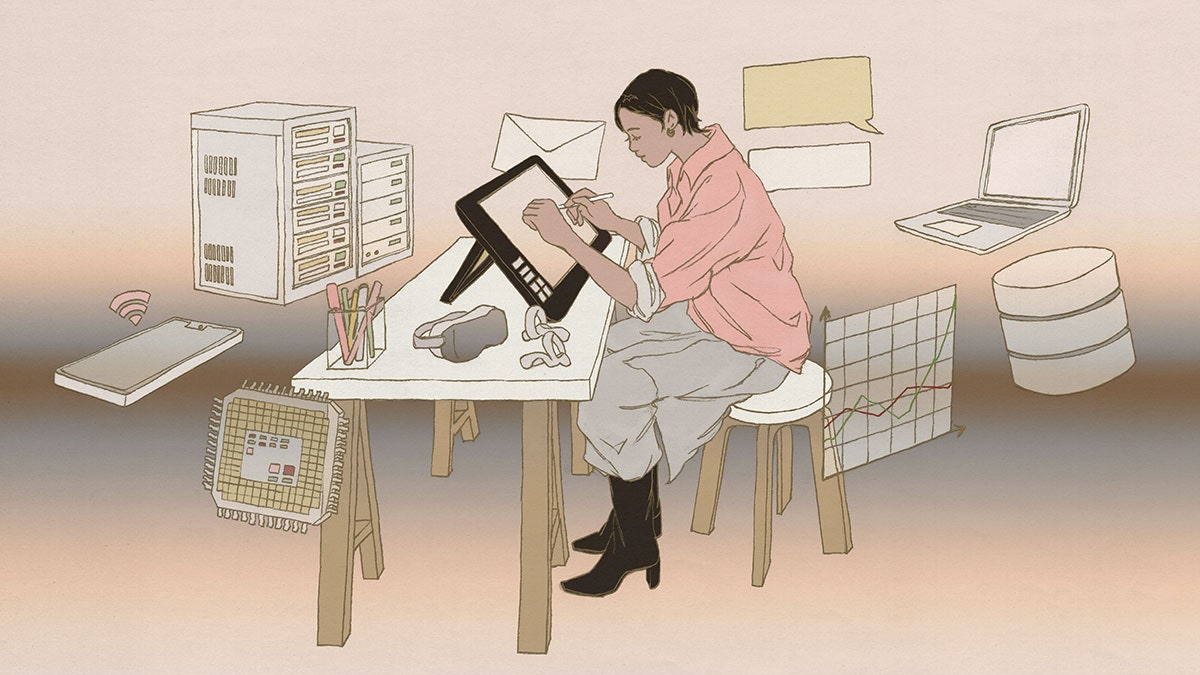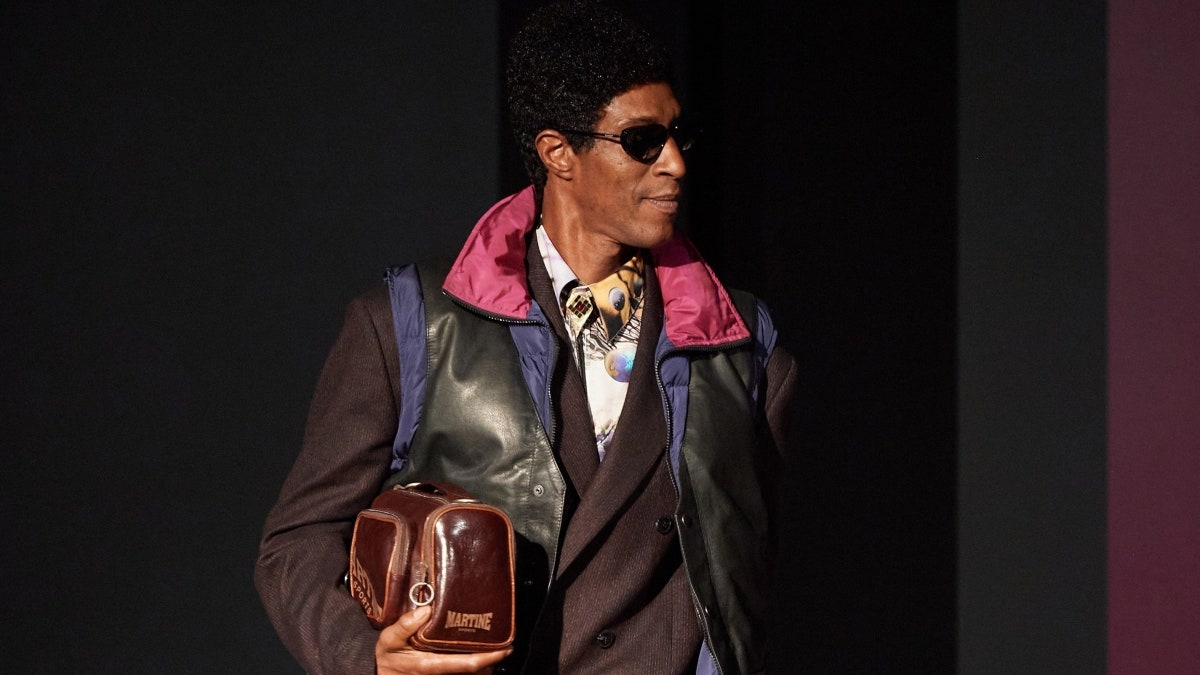Signal as much as obtain the Vogue Enterprise e-newsletter for the newest luxurious information and insights, plus unique membership reductions.
With luxurious costs rising greater than 50 per cent since 2019, entry-level designer items have in recent times turn into a uncommon idea. An alternate technique to rating a premium look, inside a extra constrained finances, could also be rising — see the revival of the second (or the diffusion) line.
Sometimes at a cheaper price level and sometimes with a extra sporty or youthful aesthetic, a current cluster of manufacturers with excessive cultural capital have launched second strains. There’s Marc Jacobs’s Heaven, revered for its Y2K aesthetic and sold-out collaborations since its 2020 debut, after which there’s No Problemo, quietly launched by informal model Aries this previous January — a line devoted to slogan items which have been noticed in every single place from White Lotus to the wardrobes of soccer stars comparable to Norway’s Erling Haaland. Each of those are cheaper than their major strains, with No Problemo costs usually half that of Aries.
Extra are coming. Bode, which has constructed a repute from craft-centric clothes, will debut Bode Rec – a sports-focused line – this autumn. (Previous to the launch, Bode Rec collaborated with Nike on a sold-out capsule that featured sneakers.) And Luar, Raul Lopez’s model recognized for its sell-out Ana bag, will debut its Fundamentals line at an upcoming present in September; it should begin with 5 objects — a hoodie, sweatpants, leggings and two T-shirts — and nothing will value greater than $500.
Luar chief model officer Adrián Díaz, says the choice to create a diffusion line was twofold: “At Luar, we converse so much about accessibility. This can be a assortment that permits for that, but additionally opens us as much as an viewers that might perhaps not usually have a look at us.”
It’s centered round rethinking the classics — utilizing buttons and zippers to, say, take off the sleeves of a hoodie in hotter climate. The flexibility and digestibility, says Díaz, ought to immediately attraction. “We wish this product to essentially transfer. We do not wish to sit on ‘X’ quantity of SKUs.”
Present second strains are in style. Lyst studies that searches for “Heaven” elevated 10 per cent in Q1 2024, whereas at Depop, searches for pre-loved items from the model are up 63 per cent since January. Luca Solca, managing director of world luxurious items at Bernstein, believes they’re submitting a vacuum and a need for impactful design with an attainable price ticket. “I feel streetwear manufacturers have pale to the background, leaving a big clean area within the style market,” he says.
The second line is, after all, nothing new. Japanese manufacturers excel at them. Pleats Please, the much-loved model from Issey Miyake, launched in 1993, is having fun with a brand new lease of life with youthful clients (searches on Depop have been up 24 per cent between March and April). Play, the Comme des Garçons spin-off, specializing in tees and trainers, dates again to 2002. With its recognisable pleasant coronary heart brand and equally pleasant costs (round £80 for a T-shirt), Play permits clients to buy the equal to merch, if they will’t afford — or generally digest — the extra conceptual concepts on the runway, which usually retail from £800 for a jacket and £230 for a T-shirt.
Margaret Howell’s MHL model was launched in 2003. The road has a extra informal really feel, and retails at half the value of Margaret Howell collections, so it brings with it a extra entry-level buyer. Income is unfold evenly throughout the 2 strains, in response to the model. The preferred items are shirting and denim, with clients typically purchasing throughout each strains. “They go properly collectively,” says Howell. “Males and the youthful folks, they in all probability combine them extra… Somebody who is aware of tips on how to costume themselves would put on collectively.” The premium materials — whether or not cotton for MHL or tweed for Margaret Howell — are a unifying thread.
Solca says the expansion of second strains might sign the necessity for premium manufacturers to diversify their choices. “The onus is on mega-brands to remain related to a broader shopper viewers, and keep away from the chance of unique, essential consumer (VIC) confinement.”
Bosse Myhr, director of menswear and womenswear at Selfridges, studies that manufacturers like Pleats Please, Max Mara’s Sportmax and Rick Owens’s DRKSHDW are robust sellers in retailer. He thinks this can be the beginning of an even bigger development. “As youthful manufacturers set up and evolve I’d positively anticipate that second strains turn into a brand new technique to experiment, develop and react,” he says.
Many may be impressed by the current Miu Miu increase. Whereas the model, which launched in 1993, is hardly a second line to Prada (costs between the 2 are comparable), it’s typically known as a ‘little sister’ (Miu Miu is the childhood nickname of Miuccia Prada) and it does have the requisite youthful really feel of a diffusion line. It’s additionally proving vastly profitable — with gross sales up 89 per cent in Q1 2024, in comparison with Prada’s 7 per cent — suggesting it’s the second-line look, and worth, that customers are responding to.
Katy Lubin, Lyst’s VP of name and communications, reinforces this: “Prada followers admire that they’re shopping for right into a components that’s been perfected over years… It looks like we’ve all fallen head over heels in love with Miu Miu because the enjoyable little sister of Prada that’s youthful and girlish, however powerful.”
The second line is just not all the time a long-term means for a model to attraction to completely different customers. Vogue’s current historical past is suffering from loved-but-now-defunct labels. D&G, created by Dolce & Gabbana in 1994, grew to become an after-dark favorite, as did the unique Versus Versace, launched in 1989 — they closed, respectively, in 2011 and 2005. In an announcement, Dolce & Gabbana stated the choice was made to present “much more energy and vitality to our collections”, with the concept that the 2 strains could be merged, whereas Versus was the sufferer of Versace’s monetary difficulties. Marc Jacobs beforehand had Marc by Marc Jacobs, a unusual label based in 2001 that closed in 2015, after a tenure of Luella Bartley and Katie Hillier as artistic administrators. (The closure was because of the identical merging technique as prompt by Dolce & Gabbana.) 2019 introduced Extra Pleasure, Christopher Kane’s product line in style for its slogan tees and novelty intercourse toys, which is now not buying and selling with the principle enterprise in administration.
If the brand new wave of strains is to have long-term success, maybe the main target must be much less on affordability, and extra on creating collections with a reliable identification. One thing that may be seen at each established manufacturers and people beginning out.
Howell’s style underpins the success of her model. “It’s based mostly on my life-style,” she explains. “As a working particular person, I have to really feel snug in practical garments, however with a bit of favor. That’s the place MHL got here from.” Díaz echoes this concept by way of Luar’s Fundamentals; he sees it as a technique to deliver the tropes of the model into the world. “Everybody is aware of concerning the bag,” he says. “Now there’s going to be one other visible ingredient that makes them say, ‘Oh, that’s Luar.’”
A retail perspective implies a rounded method is essential. “Second strains should not nearly bringing a decrease entry worth to a model,” says Selfridges’s Myhr. “ creating the chance to supply one thing new and join with completely different audiences.”
Diffusion strains are having a revival



